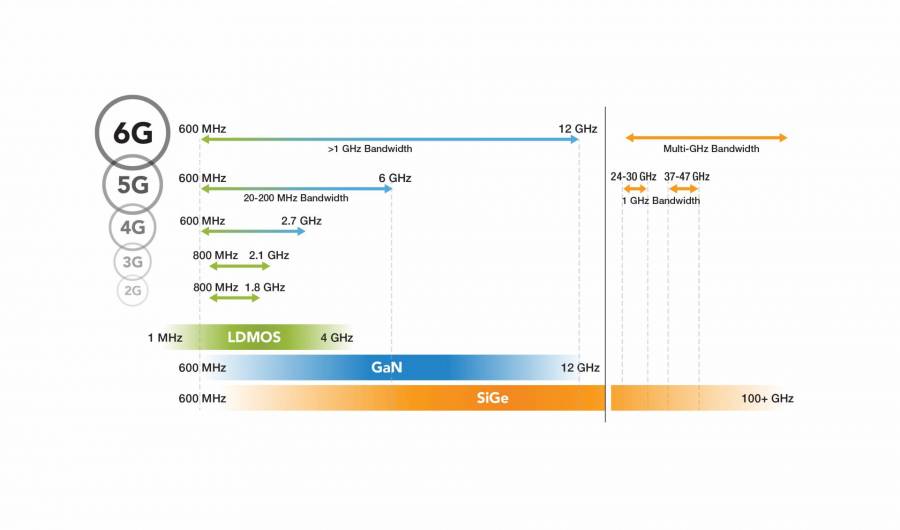While many of us are now used to seeing the 5G symbol on our mobile devices, the full implementation of this technology is still in its early stages. It is easy to overlook its potential impact due to the prolonged discussions surrounding it.
The 5G Revolution: Just Getting Started
We need to acknowledge that 5G is a game-changer, and we have only scratched the surface of its capabilities.
The Potential
5G wireless networks are expected to deliver speeds at least 10 times faster than current 4G networks (Verizon claims up to 20 times faster) and significantly reduce latency, from 20-30 milliseconds in 4G to less than 10 milliseconds in 5G.
Moreover, the sustainability benefits of 5G are substantial. Recent studies have shown that 5G networks are up to 90% more energy-efficient than 4G, primarily due to advancements in hardware and software design focusing on efficiency.
Enhanced Experiences
Consumers can expect improved gaming, streaming, and interactivity using wearables and smartphones for various activities, from transactions to healthcare. Industries like autonomous driving and industrial automation will leverage 5G for faster and more effective communication, leading to enhanced safety and performance. Smart cities will utilize 5G for better integration of infrastructure, buildings, and roads.
5G connectivity represents a significant leap forward in terms of speed, capacity, and latency reduction. It is projected to contribute a $2 trillion boost to the global GDP by 2030 in sectors such as healthcare, manufacturing, transportation, and retail.
The Challenges
To support the massive increase in cellular base stations required for widespread 5G connectivity, several key challenges need to be addressed: boosting signals to higher frequencies, enhancing energy efficiency, and working within existing infrastructure such as upgrading 4G towers where feasible.
While forecasts indicate a tripling of 5G networks this year and an estimated 3.6 billion users by 2025, only a third of the world’s countries currently have access to 5G. It’s crucial to understand the ongoing development and deployment of essential components driving the global 5G rollout.
Power Amplifiers
Firstly, Power Amplifiers are vital components in the cellular base station signal chain. They amplify low-level RF signals from transmitters to the required power levels for antennas, which are crucial for enhancing speeds and coverage in 5G networks.
New base station architectures are being implemented to support 5G, including advanced macro base stations, remote radio heads, small cells, and innovative active antenna solutions like mMIMO systems.
Radio Frequency
Secondly, Radio Frequency (RF) plays a crucial role in transmitting and receiving data between devices and base stations across all generations of mobile networks, including 5G.
RF uses a spectrum of frequencies below microwaves to transmit information over long distances. 5G necessitates higher radio frequencies to achieve its enhanced speeds.
Other Frequencies
Thirdly, “Other” Frequencies are being leveraged with each new generation of mobile broadband, with 5G utilizing more bandwidth than its predecessors. Higher radio frequencies will be instrumental in delivering the speed capabilities of 5G.
The FCC is actively auctioning high-band spectrum to support 5G, along with providing additional mid-band, low-band, and unlicensed bands for improved connectivity.
GaN
Fourthly, GaN (gallium nitride) technology is essential for powering 5G networks due to its semiconductor properties that enable high-power operations. GaN semiconductors offer benefits such as higher temperature tolerance, increased power handling capacities, and faster switching speeds.
The significance of GaN in 5G development is evidenced by the establishment of advanced GaN fabrication facilities like the one recently opened in Arizona, which is the most sophisticated semiconductor manufacturing facility in the U.S.
LDMOS
Fifthly, LDMOS semiconductor technology is deployed in amplifiers for various applications, including microwave, RF, and audio power. It offers a cost-effective and mature solution for high-power operations at lower frequencies, complementing GaN technology.
As GaN technology becomes more widely adopted and advances further, the cost differential between GaN and LDMOS is expected to decrease.
SiGe
Sixthly, SiGe (Silicon-Germanium) semiconductor technology provides high-speed, high-frequency performance for wireless applications at a lower cost. It enables the integration of analog, RF, and digital functions on single integrated circuits, complementing GaN and LDMOS technologies.
The evolution towards global 5G implementation is still at an early stage and requires substantial innovation and commitment. The potential benefits are promising, but significant advancements are needed to realize them.

The revolution is just beginning.
Image Credit: graphic provided by the author; thank you!
Top Image Credit: marko klaric; pexels; thank you!
